The Quartz Crisis: The almost-downfall of the mechanical watch
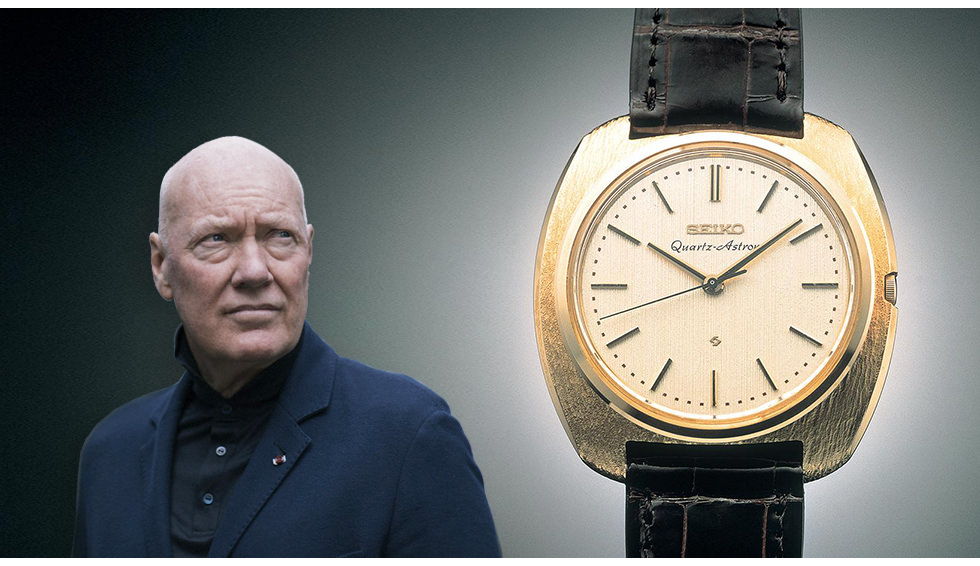
The Swiss watch industry of the seventies – Expulsion from paradise
In the 1970s and 1980s, Switzerland suffered from the worst economic crisis in its history. The so-called “quartz crisis” affected the entire watch industry and almost brought it to it to its knees. Within 13 years, the crisis cost around two-thirds of the industry’s employees their jobs and fueled great fears of survival. But what exactly was the quartz crisis and how did Switzerland save itself from the demise of its most valuable industry?
The monopoly
At the beginning of the 20th century and until well after the Second World War, 95 % of all mechanical watches sold worldwide came from Switzerland. There was practically no competition, and the technical and craftsmanship lead was too great. Production was carried out in state-controlled small enterprises, most of the work was done by hand and with simple but proven machines. Even then, Swiss watches were synonymous with perfection, craftsmanship and quality. 90,000 people worked directly or indirectly for the watch industry. Until the early seventies, the situation was comfortable but doomed to tragically change.
Seiko quartz watches from Japan flood the world
In 1969, the Japanese watchmaker Seiko launched his first commercially marketed quartz wristwatch called “Astron”. Simultaneously, the company invented a completely new marketing strategy for its industrially manufactured products, focusing on the aspect of accuracy instead of craftmanship and vertical integration. “Quartz precise”, a characteristic that the inexpensive watches from the Far East mastered with flying colors.
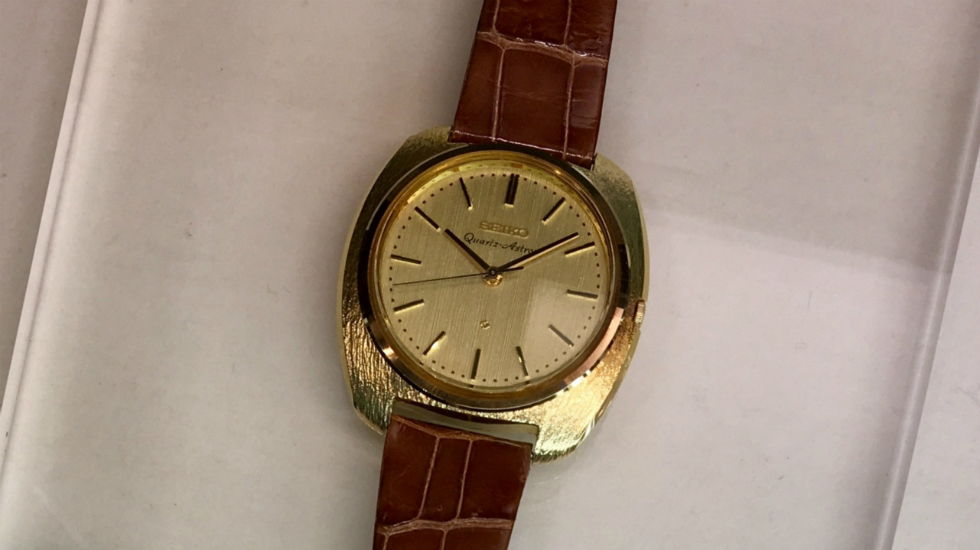
The Japanese also presented their watches in a young, fresh and cheeky manner. Thanks to ultra-modern production, they were of solid quality. The designation of origin “Swiss made” was suddenly worthless and dusty. Seiko centers sprang up everywhere, while Swiss made mechanical watches were suddenly considered imprecise and overpriced. Also the Swiss quartz watches turned out to be expensive shopkeepers, which could only be sold with a lot of effort and at heavily discounted prices.
Who invented it? – Who copied it?
It’s a paradox: one of the world’s first quartz movements was manufactured by a Swiss watchmaker consortium as early as the early seventies. Among others, Omega, Rolex and Patek Phillipe used the so-called Beta 21 movement at that time, but there were no sales worth mentioning. Despite or precisely because of this innovation, year after year the red figures were going downhill. After a long battle against price erosion and image loss, the watch industry in Switzerland was practically on the brink of collapse at the end of the 1970s. Nobody expected a turnaround yet. Nobody?
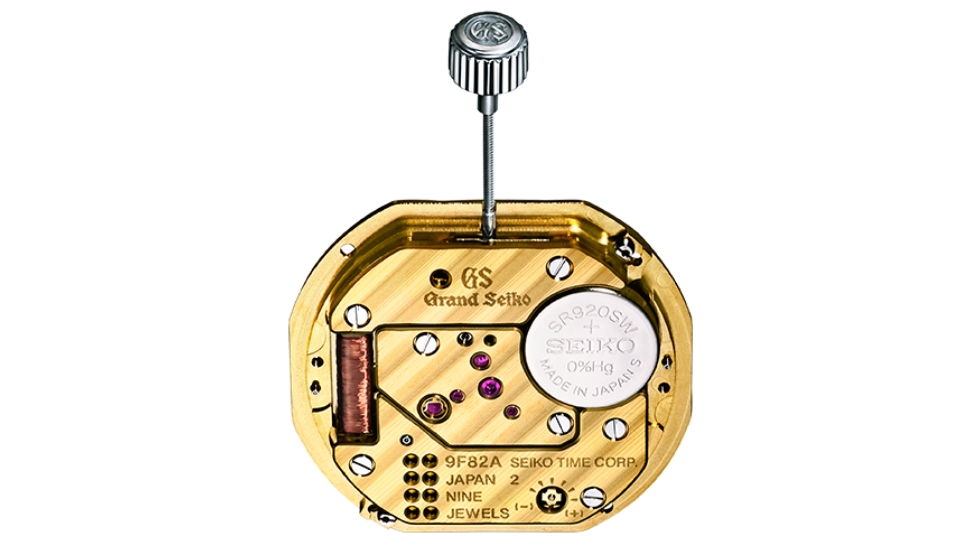
Swatch – Highest Swiss Quality at the lowest Price
At the beginning of the 1980s, Swiss banks commissioned management consultant Nicolas George Hayek to analyze the seemingly hopeless situation. Hayek, who once described himself as an impatient dreamer, found two ways out of the crisis. His idea was to unite the brands of the two largest watch groups (ASUAG and SSIH) under one strong umbrella brand and to develop a new watch collection offering Swiss quality at a low price. The Swatch Group was born through a banking agreement, with Nicolas G. Hayek at the helm.
Already after a short period of R&D, Hayek had quartz and automatic movements built in plastic cases and launched huge numbers of Swatch watches on the international markets. He pursued a provocative marketing strategy that was extremely unusual for the Swiss watchmaking industry. Swatch watches were flat, light, colorful and shrill. Hayek himself decided which designs would go into production. In the lower price segment, Swatch watches were in direct competition with watches from Japan. Swatch suddenly became a trendy accessory of pop culture worldwide. Swiss made was en vogue again. A stroke of genius, literally in the last second.
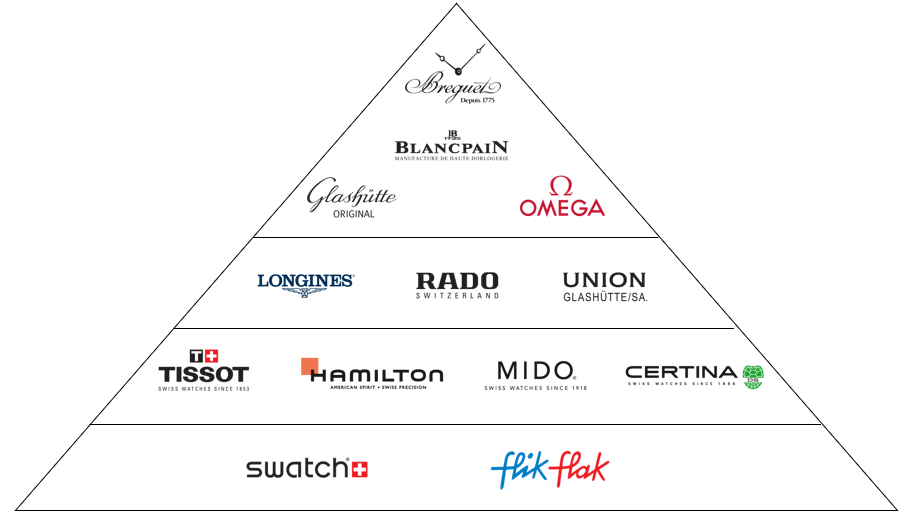
The Hayek Pyramid
The great success of the Swatch watches formed the financial basis for the revival of the once great traditional brands. They laid the foundation, with luxury brands such as Longines and Omega marking the center and top of the business. The idea known as the Hayek pyramid was born. Today, the Swatch Group also includes the brands Glashütte Original, Blancpain, Tissot, Certina and Hamilton. Nicolas G. Hayek passed away in 2010. Today, his son Nick Hayek runs the company in Biel, Switzerland.
A mechanical watch from Switzerland lasts forever
Hayek and the banks were not the only ones responsible for the rescue from the quartz crisis. A young manager named Jean-Claude Biver bought the rights to the battered Blancpain brand in 1982 and joined the Hayek team. With Blancpain and later Zenith, Biver again relied on mechanical luxury watches and promoted them mantra-like with the terms handicraft, tradition and eternity.
For Biver, the watch was and still is part of a personal story and thus goes beyond its actual function as a pure timepiece. A philosophy that still bears fruit today. Jean-Claude Biver is still an active manager in the Swiss watch industry. Today, Biver is non-executive president of the watch division of the French LVMH conglomerate with the three watch brands Tag Heuer, Zenith and Hublot.
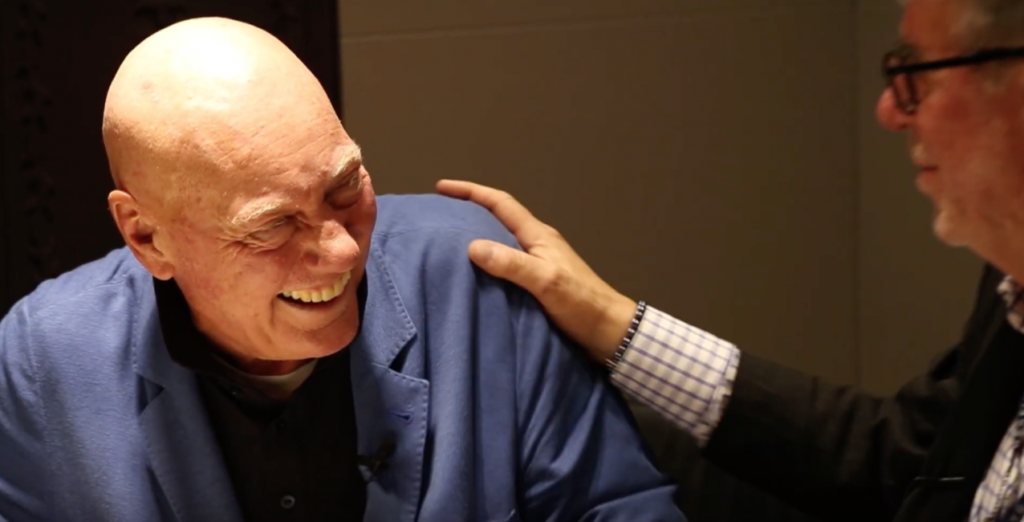
Welcome back to paradise
Switzerland’s watchmaking industry is more successful today than ever before. Sales have been rising worldwide for years. In 2018, watches worth 21 billion Swiss francs were exported. Sales are particularly strong in Hong Kong, China and the USA, but also in the United Kingdom, Japan and Singapore. The industry was able to create 3000 new jobs in Switzerland and counting. Without Nicolas G. Hayek and Jean-Claude Biver, the great world of watches would be a much poorer one today. They revived an industry that had already been declared dead and brought it back to life.





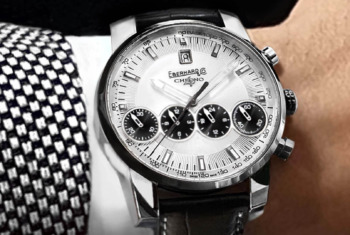
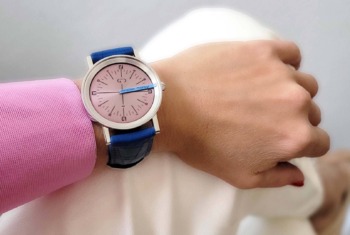

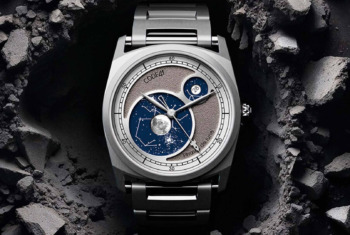
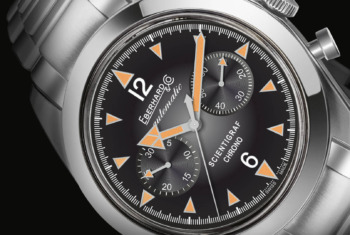
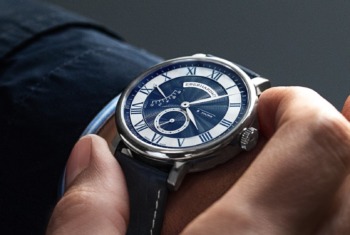
[…] Allemano did not produce any watches at that time (but primarily underwater instruments), the quartz crisis that occurred in the 1980s did not stop at the Italians: The reason was that mechanical measuring […]
[…] watch company Swatch then rose to create affordable quartz timepieces. The company’s success prompted the acquisition […]
[…] but it was a logical consequence of the spirit of the times and can be easily explained by the quartz crisis, in the midst of which the first Laureato was born. (Two years later, in 1977, Rolex also launched […]
[…] trivia: The ETA-Untitas 6498 is one of the few mass-produced pocket watch movements to survive the quartz crisis of the 1970s, thanks to its high reliability, precision and ease of maintenance. It is still widely […]